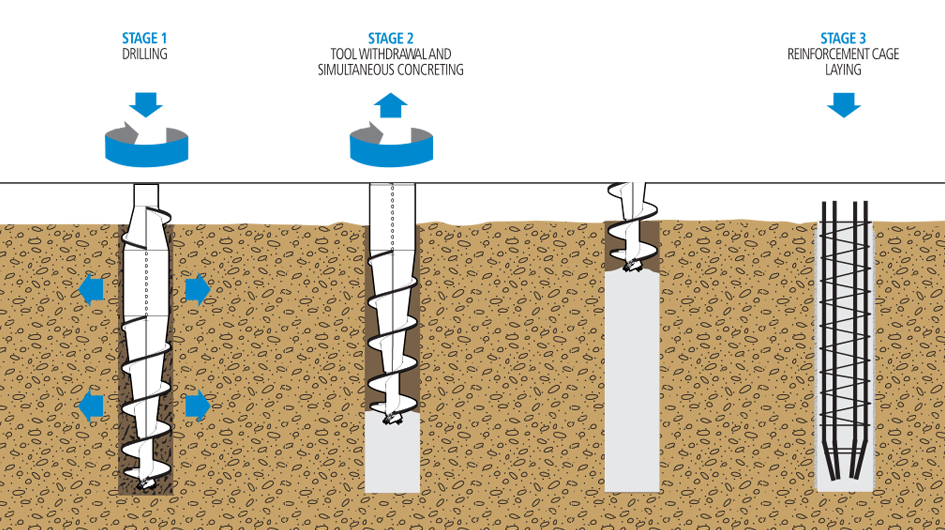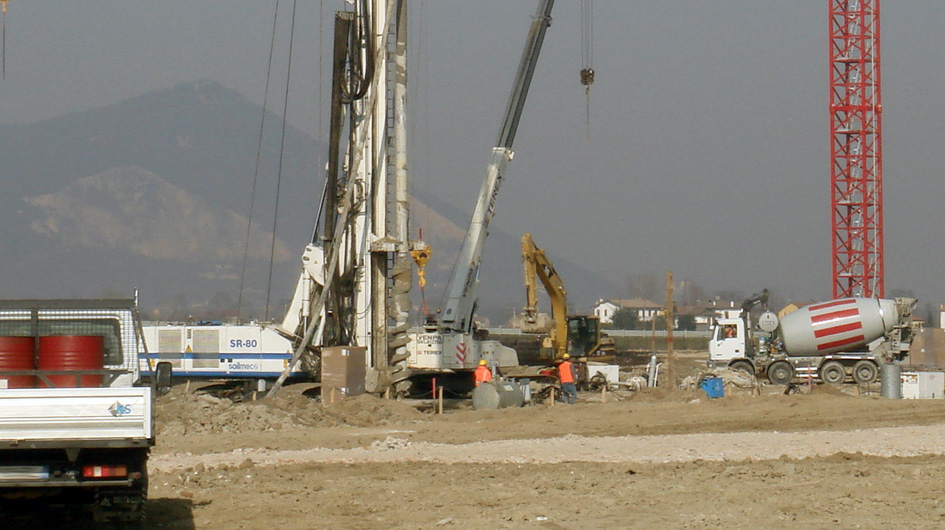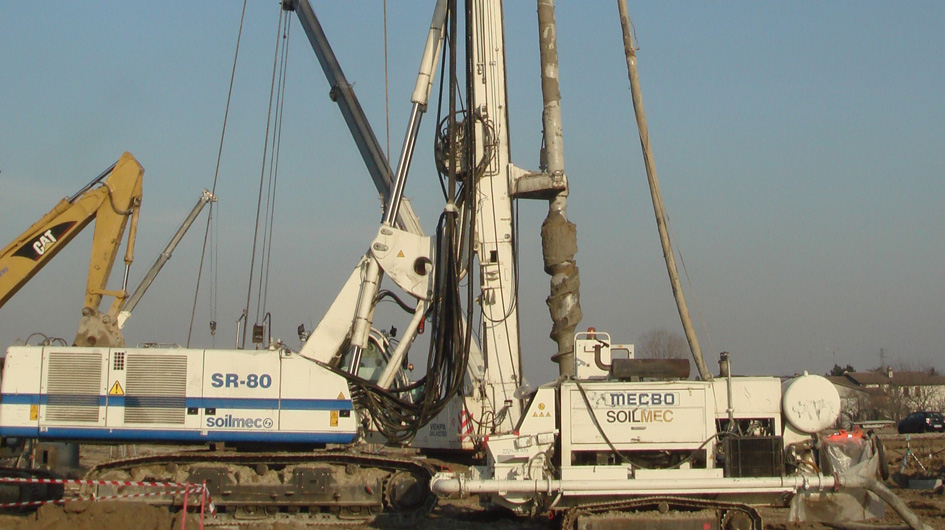Displacement Piles
If soil removal has to be minimized during foundation works, displacement piles can be the solution.
Trevi has fine-tuned a technology combining the absence of debris typical of driven piles, with the speed and low cost of continuous flight auger piles.
Thanks to powerful drilling rigs and suitable tools, the Discrepile technology allows to drill foundation or consolidation piles in suitable soils, also in the presence of aquifer, thus significantly reducing the problems and costs associated with the disposal of cuttings, as it is the case in other technologies.
The use and effectiveness of this technology depends in the first place on the type of soil to drill, and secondly on the equipment and tool used. To drill a displacement pile, soil must be “compressible”. By this term it is generally meant cohesive or non-cohesive soils meeting the following parameters:
• cohesive soils with undrained shear strength Cu<100- 120 KPa
• non-cohesive soils - mainly loose sandy soils - with relative density Dr<65%
Nonetheless the Discrepile technology can also be used in “non-displaceable” soils, provided that max layer thickness is 1-1.5m within the compressible material, or that it is the material in which the pile is socketed. In both cases, a specific tool can be used to move nondisplaceable material to the upper compressible layers.
Depending on soil stratigraphy, the Discrepile technology allows to drill piles of a max length of 30 m and nominal diameters ranging from 300 to 800 mm.






